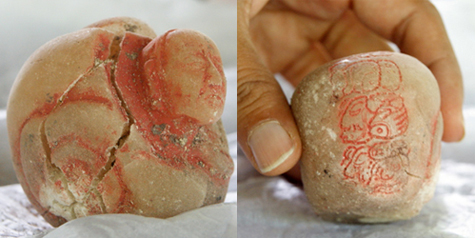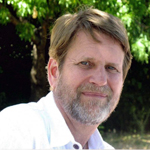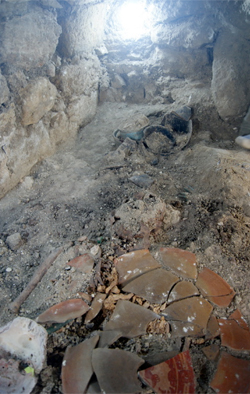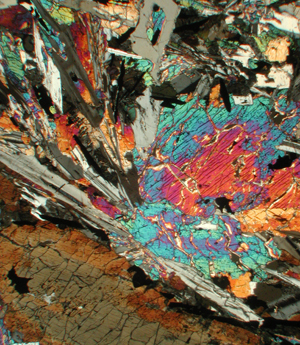With all the fanfare about Mars rover Curiosity landing safely on the Red Planet on Aug. 6, it’s easy to forget that there’s already a rover on Mars — an older, smaller cousin set to accomplish a feat unprecedented in the history of Solar System exploration.
Raymond E. Arvidson, PhD, the James S. McDonnell Distinguished University Professor in Earth and Planetary Sciences in Arts & Sciences at Washington University in St. Louis, is playing key roles in both Mars rover missions.
Since 2004, when NASA landed the Spirit and Opportunity rovers on opposite sides of Mars, Arvidson has served as a Mars Exploration Rover Mission deputy principal investigator for both of these rovers, often manning the controls that operate them on the surface of Mars.
Arvidson also was selected by NASA to be a participating scientist on the Mars Science Laboratory, a mission that landed a rover named Curiosity, on the Mars’ surface early in the morning of Aug. 6 in a complicated maneuver that NASA dubbed “seven minutes of terror.”
Curiosity, which lifted off from Earth on Nov. 26, 2011, is five times larger than Spirit or Opportunity and it carries much more sophisticated analytical equipment.
For the Curiosity mission, Arvidson plans to use the rover itself as a terramechanics instrument to learn about Martian soils. Terramechanics is the study of soil properties, especially those revealed by driving a vehicle over different terrains.
In addition to Arvidson, the Curiosity mission team includes seven Washington University graduates, all from Earth & Planetary Sciences, and one current Washington University student, Abigail “Abby” Fraemen, a National Science Foundation graduate fellow in Arts & Sciences. The graduates are: Bethany Ehlmann, AB ’04; Jen Griffes, AB ’03, MA ’06; Kim Lichtenberg, MA ’06, PhD ’10; Jeff Marlow, AB ’07; Mitchell Schulte, AB ’87, PhD ’97; Kirsten Siebach, AB ’11; and Rebecca (Eby) Williams, PhD ’00.

In a recent appearance on Fox 2 News, WUSTL'S Ray Arvidson discusses the science behind the new Curiosity rover mission to Mars, as well as longer term goals and challenges for a possible manned mission to Mars. VIEW FOX2 VIDEO.
Opportunity Runs the First Martian Marathon
Although the Spirit rover mission officially ended in May 2011 after it became mired in loose soil and lost power, the Mars rover Opportunity is on track to complete the first extraterrestrial marathon.
A marathon is 26.2 miles. When Opportunity landed on Mars in 2004, NASA’s goal was to have the rover travel a meager 600 meters. However, no one knew what kind of “runner” Opportunity would turn out to be. As of July 2012, Opportunity has traveled almost 22 miles – only 4.2 miles short of a full marathon.
Just getting to the starting line was epic: “This particular marathoner had to fly about 283 million miles across space before being unceremoniously drop-bounced on the Martian surface,” Arvidson says.
http://youtu.be/DC-rvKjBHfENASA video feature recaps successes on the Spirit and Opportunity rover missions to Mars, including comments from WUSTL's Ray Arvidson.
Opportunity’s prime mission is to search for signs of ancient water. Today, the Red Planet is a bone-dry desert with a breathtakingly thin atmosphere, conditions deadly to almost every known form of life on Earth. Billions of years ago, however, things might have been different. Many researchers believe that Mars was warmer, wetter and friendlier to Martian life. Opportunity’s job is to search for clues to that ancient time.
Like many long-distance runners, Opportunity likes to “take it slow.” On a typical drive day, the rover travels only 50 to 100 meters. This gives the rover time to pause and look for the unknown. It also allows Opportunity to take plenty of photos along the way. Recently, the rover sent home its 100,000th image, a stunning panorama.
Opportunity first uncovered signs of water in deposits near the landing site in Eagle Crater. There were rocks that seemed to have formed in an ancient shallow lake. Over the next four years, Opportunity scavenged ever larger and deeper craters, finding more evidence of wet periods. Indications were, however, that the ancient lake water might have been too acidic for life.
The metallic marathoner soon set its sights on Endeavour Crater – an enormous pit 14 miles wide and hundreds of meters deep. Endeavour’s depth would offer a look farther back into the history of Mars, to a time when the water was possibly less acidic. The marathon route crossing Mars’ Meridiani plain to Endeavor was a daring trek.
Raging dust storms reduced the rover’s solar power so much that Opportunity almost entered the “sleep of death.” Soft, sandy, wind-blown ripples trapped the rover’s wheels, and there was an injury: A failure in Opportunity’s right front steering actuator made running forward tricky. Ever resourceful, the rover ran part of its race backward.
“The course took Opportunity over sedimentary bedrock made of magnesium, iron and calcium sulfate minerals — further indications of water billions of years ago,” Arvidson says.
When the marathoner reached Endeavour Crater in August 2011, things got interesting.
“Endeavor is surrounded by fractured sedimentary rock, and the cracks are filled with gypsum. Gypsum forms when ground water comes up and fills cracks in the ground, depositing hydrated calcium sulfate. This is the best evidence we’ve ever found for liquid water on Mars.”
The gypsum veins likely were formed in conditions more pH-neutral and possibly more hospitable to life: Jackpot!
But this marathoner isn’t done. Opportunity is doing so well that 26.2 miles might not be the finish line after all.
“We have no plans to stop running,” Arvidson says.
# # #
RELATED NEWS COVERAGE
St. Louis Public Radio
St. Louis Beacon
Globe and Mail (UK)
Mars rover gets to-do list for fifth winter on planet
Popular Science
Riding along with the Mars Rover Drivers








































